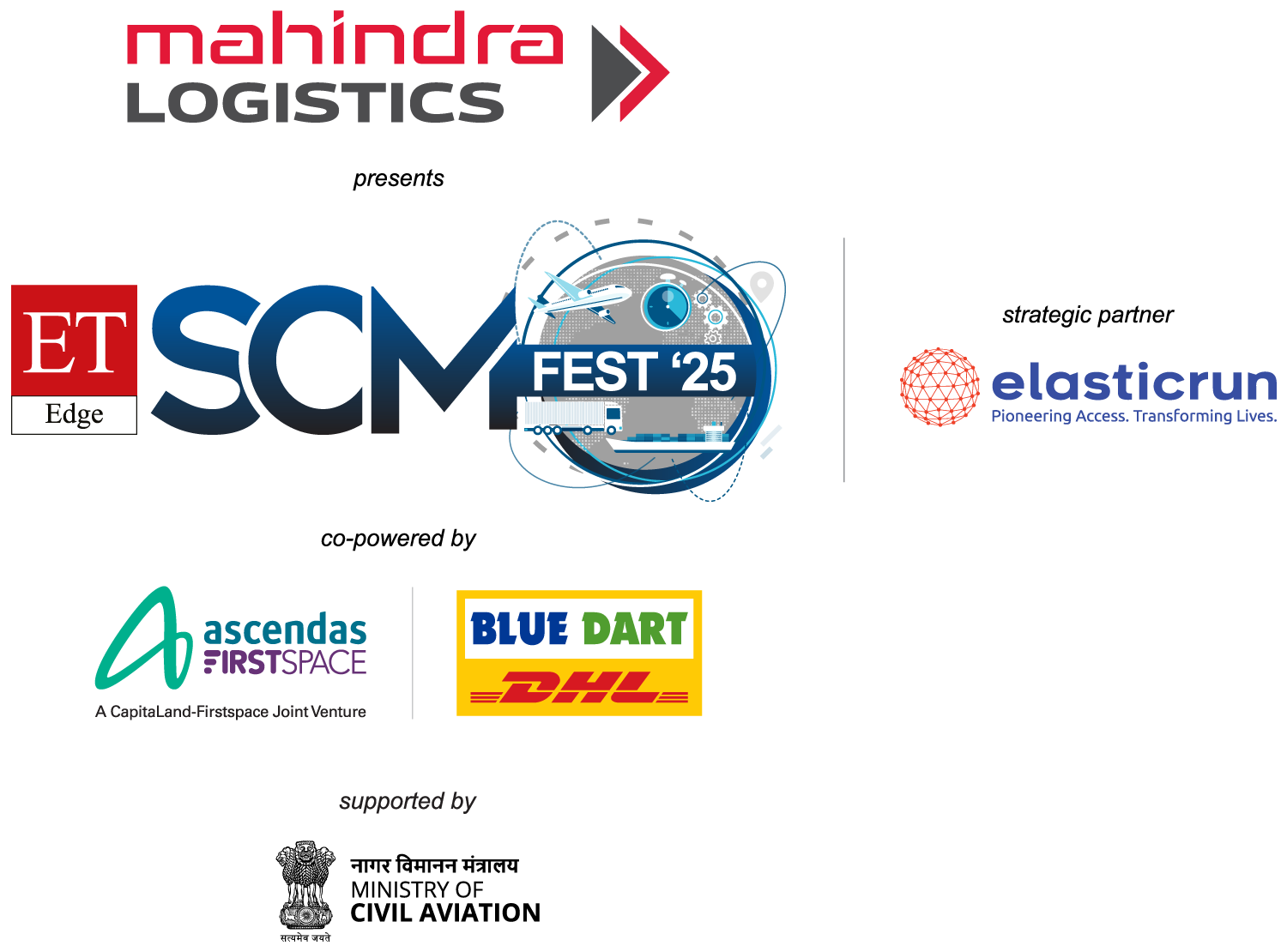ET Edge SCM Fest 2025
The Epicenter of Supply Chain Innovation
Conference | Awards | Masterclass
ET edge SCM Fest 2025
Overview
The Epicenter of Supply Chain Innovation

ET Edge SCM Fest 2025 is not just an event – it’s a transformative experience uniting the global supply chain ecosystem at a pivotal moment of disruption and opportunity. The industry’s most influential leaders, decision-makers, and innovators will come together to shape the future of supply chain management.
As the global supply chain landscape evolves with rapid technological advancements, shifting trade dynamics, and rising consumer expectations, businesses must stay ahead by embracing agility, collaboration, and operational efficiency. SCM Fest 2025 is where India’s supply chain revolution meets the global stage, offering a platform for industry pioneers to unlock strategic opportunities, navigate disruptions, and drive future-ready innovations.
With 300+ Chief Supply Chain Officers (CSCOs), 150+ visionary speakers, and 1,500+ delegates, SCM Fest is where thought leadership meets action, collaborations spark revolutions, and game-changing innovations take center stage. Attendees will gain insights into next-gen solutions, policy frameworks, and cutting-edge technologies reshaping the industry, while exploring how India is enhancing infrastructure, boosting supply chain visibility, and strengthening its role in global trade.
This power-packed fest features seven seamlessly integrated co-located events, each designed to deliver unparalleled insights, networking, and business opportunities in the ever-evolving world of supply chain management.
Who Should Attend?
-
Supply Chain Managers and Executives
-
Logistics Providers and Transport Companies
-
E-commerce and Retail Leaders
-
Warehouse and Distribution Managers
-
Technology Providers and Innovators
-
Freight Forwarders and Customs Experts
-
Consultants and Industry Experts
-
Investors and Financial Professionals
-
Sustainability and Environmental Experts in Logistics
-
Manufacturers and Industrial Supply Chain Professionals
-
Startups and Entrepreneurs in Logistics and Supply Chain
-
Policy Makers and Government Officials
Who Should Sponsor?
Manufacturers / Consulting Firms
Educational Institutions
Technology Companies
Startups & Innovators in Logistics
E-commerce & Retail Brands
Logistics & Transport Companies
Financial Institutions & Investors
Sustainability and Green Logistics Companies
SIX Co-Located Powerhouses Driving SCM Fest 2025
Supply Chain Management Summit
A high-impact knowledge forum featuring disruptive keynotes, deep-dive panel discussions, and real-world case studies from top supply chain leaders, policymakers, and tech pioneers. Discussions will span digital transformation, sustainability, geopolitical shifts, and future-ready strategies.
ENTERPRISE SUPPLY CHAIN EXCELLENCE AWARDS
A prestigious awards gala honoring excellence, innovation, and leadership in supply chain management. The ceremony will recognize outstanding individuals and organizations that are redefining supply chain success.
Air & Sea Cargo Summit
An immersive summit spotlighting the latest advancements in maritime and aviation logistics. Featuring keynote sessions, case studies, and exclusive networking opportunities, this summit is the ultimate platform for industry disruptors and solution providers to shape the next era of global trade.
© Copyright 2025. All Rights Reserved.


